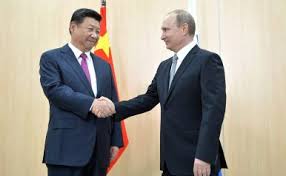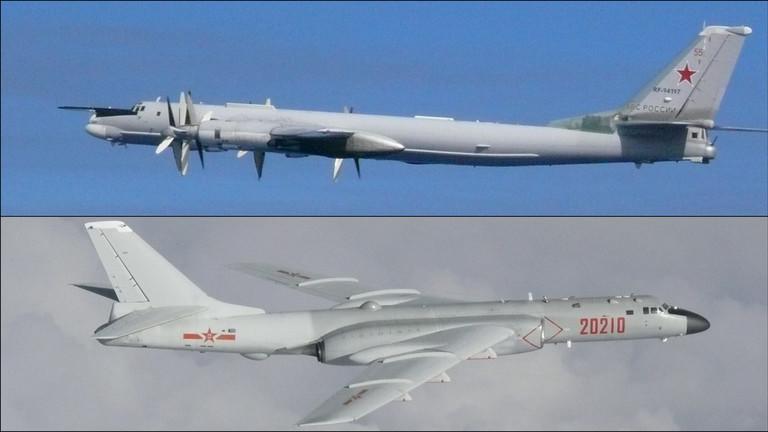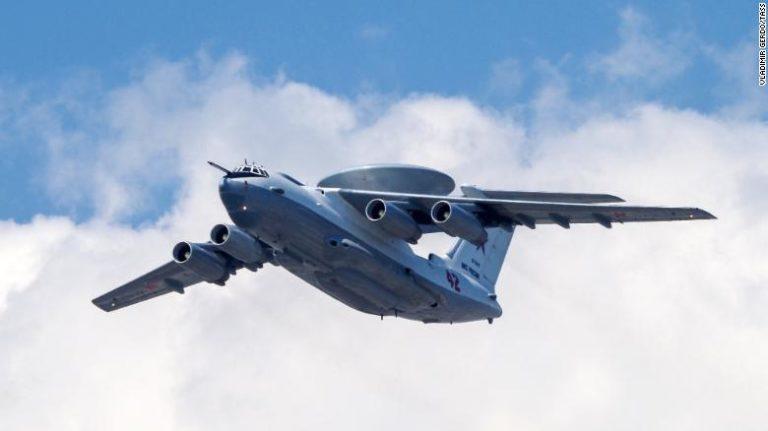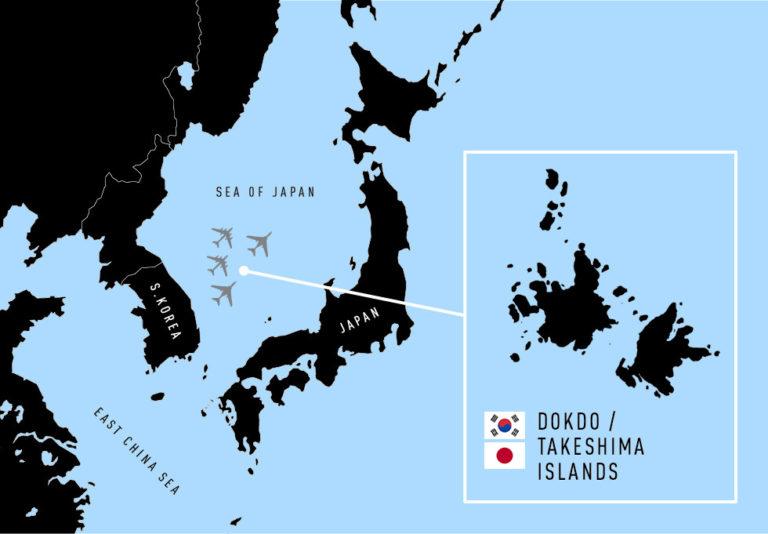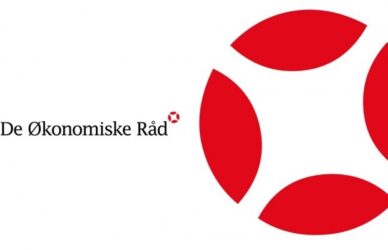via The Indian Punchline blog,
An exciting new template has appeared in the geopolitics of the Asia-Pacific last week when Russia’s Aerospace Force and China’s Air Force carried out their first-ever joint air patrol in the region.
Steadily and imperceptibly but profoundly, the regional alignments are transforming. Russia and China routinely claim that their entente is neither a military alliance nor is directed against any third country. Yet, the alchemy of that relationship is undergoing a huge transformation, stemming out of a conscious decision by their top leaderships.
The so-called joint patrol last Tuesday involved Russia’s Tu-95MS strategic bombers and the H-6K aircraft on China’s part. The Tupolov Tu-95MS (which NATO calls the ‘Bear’) is a is a large, four-engine turboprop-powered strategic bomber and missile platform to carry the new Russian Kh-101/102 stealth cruise missile, which uses use radio-radar equipment and target-acquiring/navigation system based on GLONASS. The ‘Bear’ used to be a veritable icon of the Cold War as it performed a maritime surveillance and targeting mission for other aircraft, surface ships and submarines and a versatile bomber that would deliver the thermonuclear bomb.
China’s H-6K is a heavily redesigned version of the ‘Bear’, capable of carrying air launched cruise missiles. According to the Pentagon, the bomber gives China a “long-range standoff offensive air capability” with precision-guided munitions. Russia and China deployed two each of the Tu-95MS and H-6K strategic bombers in the air patrol on Tuesday.
According to a Russian Defence Ministry statement, the air patrol was undertaken on the “planned route over the Sea of Japan and the East China Sea.” The statement added that the joint air patrol was intended to strengthen Russian-Chinese relations and raise the level of interaction between the armed forces of both countries, in particular, to expand their capabilities for joint operations.
Significantly, the Russian statement said that another goal of the joint patrol is “strengthening global strategic stability.”
The South Korean defence ministry, however, insisted that following the Russian-Chinese air patrol by the strategic bombers, a Russian A-50 command and control military aircraft also entered the country’s Air Defence Identification Zone (ADIZ) twice. South Korea claimed that it deployed fighter jets and fired 360 warning shots ahead of the Russian A-50, which is an unarmed AWACS plane, designed for tracking and observation.
Russian A-50 aircraft. File photo
Why Russia and China jointly undertook an unprecedented joint air patrol over the disputed islands in the East China Sea (known to the Koreans as Dokdo and to the Japanese as Takeshima) remains unclear. But, quite obviously, it is an affront to the US, which has alliance treaties with both Japan and South Korea. The incident comes barely two months after the release of the Pentagon’s Indo-Pacific Strategy Report, which spelt out the US’ dual containment strategy against China (“a Revisionist Power”) and Russia (“a Revitalised Malign Actor”.)
The Chinese Defense Ministry’s official spokesman Col. Wu Qian saidon Wednesday, “I would like to reiterate that China and Russia are engaged in all-encompassing strategic coordination. This patrol mission was among the areas of cooperation and was carried out within the framework of the annual plan of cooperation between the defence agencies of the two states. It was not directed against any other “third state.”
“As far as the practice of joint strategic patrols is concerned, both sides will make a decision on the matter on the basis of bilateral consultations. Under the strategic command of the heads of states, the armed forces of the two nations will continue developing their relations. The sides will support each other, respect mutual interests and develop corresponding mechanisms of cooperation.”
Clearly, the Chinese statement has been far more assertive than the Russian statement, describing the joint patrol as part of an “all-encompassing strategic coordination” between the two countries and may continue in future as they “support for each other, respect mutual interests and develop corresponding mechanisms of cooperation.”
Map of the route of Russian-Chinese joint patrol mission on July 23, 2019
Moscow also says that the first-ever joint patrol of the long-range aviation in the Pacific was the beginning of a wider program, which aims to boost the Russian and Chinese militaries’ ability to work together and the planned program stretches at least for the remainder of the year.
Neither Russia nor China is party to the maritime dispute in the East China Sea and when the undertook a joint patrol nonetheless, it bore an uncanny resemblance to the US exercising its ‘freedom of navigation’ in the South China Sea. The US has a big military presence in the region but was rendered an ineffectual observer, unable to go the aid of either of its allies — Japan and South Korea which too could protest and lament from the sidelines.
The symbolism is striking. The US National Security Advisor John Bolton who was on a visit to Seoul a day after the flyover of the islands by the Russian and Chinese strategic bombers exhorted South Korea and Japan to work together amid growing security concerns.
On the other hand, the incident last Tuesday only served to highlight the conflicting claims over the islands. Eighteen South Korean jets and about 10 from Japan’s Self-Defense Forces were deployed to the area during the incident. Japan, which considers the South Korean-controlled islands as its own, maintains that the South should not have responded to the Russian plane. Meanwhile, a South Korean Defense Ministry spokesperson said Wednesday that Japan’s views are completely irrelevant.
In fact, one viewpoint is that China and Russia took advantage of this rift to put their security partnership to the test. The CNN speculated that the Russian-Chinese mission may have been designed to draw out South Korean and Japanese aircraft for intelligence gathering purposes.
Either way, Russia and China may have underscored that carrying forward their convergence on the Asia-Pacific region, their two militaries intend to undertake active “strategic coordination” in the Far East where the US has begun deploying advanced missile defence capabilities. For China, the timing is particularly significant in view of the proposed US arms sales to Taiwan.
For both Russia and China, the Far East will be of increased importance in the period ahead as forming a gateway to the Northern Sea Route, the shipping lane which the two countries are jointly developing to connect the Atlantic Ocean and the Pacific Ocean along the Russian coast of Siberia and the Far East.

